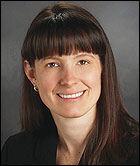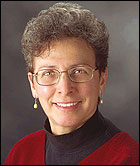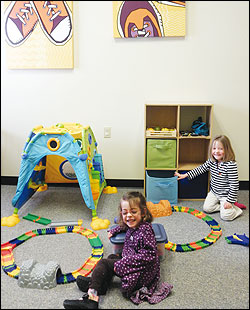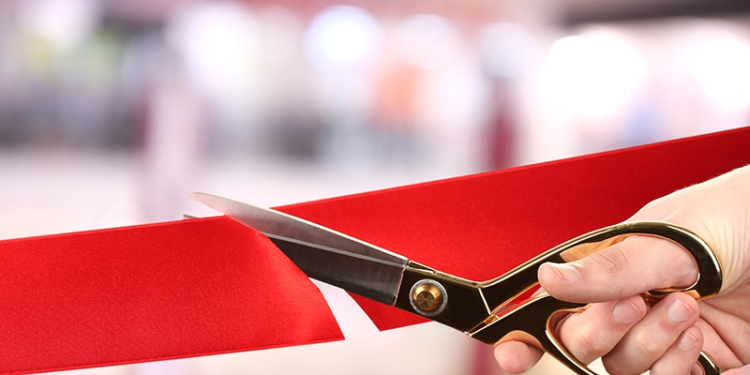 Working with children who need prosthetic and/or orthotic intervention is both challenging and rewarding for everyone involved-the clinician, the patient, and the family. Achieving successful outcomes when working with children depends not only on the practitioner’s clinical skills and experience, but also on personality-how well the clinician interacts and communicates with children. Working with children is much more involved than working with adults, both clinically and logistically, because for every pediatric patient, the clinician is
Working with children who need prosthetic and/or orthotic intervention is both challenging and rewarding for everyone involved-the clinician, the patient, and the family. Achieving successful outcomes when working with children depends not only on the practitioner’s clinical skills and experience, but also on personality-how well the clinician interacts and communicates with children. Working with children is much more involved than working with adults, both clinically and logistically, because for every pediatric patient, the clinician is working with at least two clients-the child and one or more parents-as well as physical and occupational therapists, teachers, other caregivers, and let’s not forget the physician. Pediatric patients seem to bring an entire village with them into the treatment room. Siblings who are present at appointments can create unnecessary distractions for you and your patient, and a pediatric patient’s attention span can be very short. Parents, often their child’s best advocates, can seem to be more concerned with the child’s needs and the details of the practitioner’s work than they would be if they themselves were the patients. Parents who are focused on gathering or giving information can appear to be oblivious to the unfolding chaos of sibling interaction. As O&P clinicians, we not only have to do our best to keep the child happy and calm while we are working with him, but we also need to keep his entourage satisfied.
working with at least two clients-the child and one or more parents-as well as physical and occupational therapists, teachers, other caregivers, and let’s not forget the physician. Pediatric patients seem to bring an entire village with them into the treatment room. Siblings who are present at appointments can create unnecessary distractions for you and your patient, and a pediatric patient’s attention span can be very short. Parents, often their child’s best advocates, can seem to be more concerned with the child’s needs and the details of the practitioner’s work than they would be if they themselves were the patients. Parents who are focused on gathering or giving information can appear to be oblivious to the unfolding chaos of sibling interaction. As O&P clinicians, we not only have to do our best to keep the child happy and calm while we are working with him, but we also need to keep his entourage satisfied.
Preparing Your Facility

When working with children, the first step is to prepare your facility. Paint the walls with bright colors and hang lively artwork on the walls so that it is at a child’s eye level. If your facility includes some child-sized furniture and a lot of toys, children are more likely to be at ease the minute they walk through your door. Keep in mind that the parents may be there for your expertise, but the child would prefer to play and have fun. Make sure you have toys that are appropriate for each age level. Sturdy plastic or wooden toddler toys, building blocks, a dollhouse or castle, and small cars or trucks are always appealing. For older children, some small hand-held toys or games are good. School-age children love playing games with their parents, so question-and-answer games like Brain Quest or 20-Q are simple and entertaining. On the more active side, consider having a game available that makes your patients stand up and test their balance or see how their new AFOs feel. We have a stand-up basketball game in our office. It’s large but very popular! Even non-walkers can often hold onto the frame and shoot baskets.
Soothing Young Nerves
Now that your young patient has had some playtime, you need to be able to get your work done while keeping her calm and happy. Newborns to four-year-old children may not get through the first visit without some tears. Infants often cannot help being scared, angry, or anxious, and react in the only way they know how. With this population, it is important to explain to the parents what will happen next, why you are doing it, and how they can help. Smile a lot, be playful while you work, have some toys on hand, and designate one parent as the holder/cuddler and the other one as the entertainer. If only one parent is present, learn to measure or cast while being the entertainer yourself. Learn a few timeless children’s songs, such as “The Itsy, Bitsy Spider,” and make intermittent eye contact with the baby while you speed through your tasks. Speak in soft, gentle tones and make funny faces if you know how. If the baby is looking at your face or the way your head swings in time with the song, she may not notice the scissors in your hand. Use these same techniques with toddlers, but add the promise of a reward such as stickers when the appointment is over. Keep a lap-size basket or bin of small toys on hand for distractions during casting procedures. If the toddler is crying while you cast her, sing quieter than her cries. If she wants to hear you, she will have to stop crying. This works at least half the time.
Preschool-Age Children
There are numerous approaches that practitioners can take when working with preschool-age children. When you enter the exam room for the first time, try to quickly assess the child’s mood and emotional state. If you enter and find a happy, smiling child, you should respond with a smile and engage with the child briefly before addressing the parents. If you enter the room and the child starts crying or looks at you in fear, pretend to ignore the child and put your attention on the parents. Let the child get used to you before you try to engage him in conversation. When all else fails, get your task done, and get it done fast!
School-Age Children
With school-age children, it helps to acknowledge the child as soon as you walk in the room. Ask the child some questions about his favorite activities or if he has pets at home-something to break the ice. Talk to the parents next and determine what you need to accomplish in this visit. Then resume addressing the child directly, asking him about the devices he uses, if he has any pain, if he knows why he is there. Some kids like to be coddled and treated like a kid; others like to be treated as an adult and be part of the decision-making process. Try to quickly determine the child’s intellectual level and then converse with him at that level. Be careful not to talk down to the child, but don’t bore him with adult explanations unless he asks for them. If he does ask a question, give a brief, simple answer. If he wants more detail, he will ask for it. Otherwise, you will just bore him. Most kids will tell you that adults talk too much. If a child is non-verbal, don’t assume he doesn’t understand you. When you address the child, always make eye contact with him. Take cues from how the parents communicate with the child.
Adolescent Children
When casting an adolescent child, try to keep light conversation going. Tell a few jokes or ask the child if she knows any good ones. Children love to laugh and will be much more relaxed and cooperative if they like you and think you are funny. Keep in mind that while the parents expect you to be knowledgeable, experienced, and nice to their child, the child just expects you to be nice. If you don’t feel that you are naturally funny, try keeping some quiz games on hand, which can entertain even the most bored adolescent. These games are inexpensive and don’t take up much shelf space. It’s amazing how children who don’t like to take tests at school love to be quizzed when it’s a game. Enlist the parents’ help in keeping the child entertained.
Teenage Children
Treat teenagers like adults, but don’t bore them with lengthy explanations. Ask them about their favorite sports or hobbies, their favorite video game or television show, or debate their favorite junk food. Pick a non-threatening topic, let them express themselves, and react in a non-judgmental manner. Teenagers are usually capable of talking about their prosthesis or orthosis, but they can sometimes be sullen and uncooperative. Talk directly to them and really listen to what they are saying. Take their complaints and criticisms seriously, and don’t lecture them. Try to empathize with their difficulties, and try to find ways to make their device more user-friendly and more socially acceptable. If the interaction between the teen and her parents seems toxic, try getting information from the parents outside of the exam room and see if the parents will allow you to work alone with the child. An exception to this is a male practitioner working with a female scoliosis patient. It is advisable to always have another adult present to avoid the potential for a misconstrued interaction.
There is no cookie-cutter approach to dealing with pediatric patients-though cookies themselves might actually help! Treat children with the same respect and consideration you would give to an adult patient. Be flexible and attentive, listen hard, and think fast. Remember that no matter what age the patient is, working with children will require all your powers of creativity, compassion, and communication. Have fun. Working with this population will enable you to do your best and most important work and can provide you with the most rewarding experiences of your professional life.
Deborah C. Wilde, MS, CPO, FAAOP, is the owner of Bio-Medic Appliances, Essex Junction, Vermont. She holds a master’s degree in biomechanics from the University of Illinois at
Urbana/Champagne and certificates in prosthetics and orthotics from Northwestern University, Chicago, Illinois. Sarah M. Thomas, CPO, is a clinician at Bio-Medic Appliances. She holds a bachelor’s degree in science from Villanova University, Pennsylvania, and orthotic and prosthetic certificates from The Newington Certificate Program, Connecticut.
Society Spotlight is a presentation of clinical content by the Societies of the American Academy of Orthotists and Prosthetists in partnership with The O&P EDGE.




